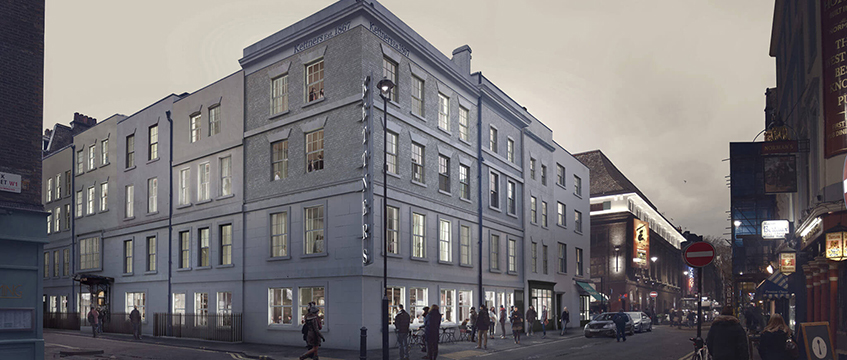Brownfield development: one developer’s perspective
Philip Thompson shares the experiences of Soho Estates.
Brownfield development takes on a different character in a densely packed conservation area like Soho.
Soho Estates regenerates the quarter as a custodian of its heritage and future heritage. We look to keep its historical buildings fit for a business and entertainment district – a centre of the global entertainment industry.
Philip Thompson shares the experiences of Soho Estates.
Brownfield development takes on a different character in a densely packed conservation area like Soho.
Soho Estates regenerates the quarter as a custodian of its heritage and future heritage. We look to keep its historical buildings fit for a business and entertainment district – a centre of the global entertainment industry.
Our letting policy is to encourage entrepreneurs such as Nick Jones, who opened his first Soho House club for creatives in 1995 at 40 Greek Street. He now has 23 clubs globally, and we have been rewarded for initial support with additional tenancies at 69/71 and 76 Dean Street, with more on the horizon.
The strategy
The core of Soho Estates’ £1bn portfolio was assembled by theatre and nightclub promoter and publisher Paul Raymond, but has been expanded substantially since his death in 2008. Raymond ploughed his profits into property at a time when the area was unfashionable, dangerous and run down. A large proportion of acquisitions were listed buildings or unfit for purpose, but, if it was rented, he left it alone.
The current family directors, John and Fawn James, are less accepting of a status quo that will deteriorate before it reaches the next generation. Their strategy is to secure and grow income through sensitive modernisation.
That modernisation isn’t always obvious. Our temporary offices were created by combining four buildings to produce the larger floorplates – up to 2,000 sq ft – required by future tenants. Kettner’s Townhouse and the new Soho House Club were formed from 15 Georgian townhouses, 11 of them listed.
Our 300,000 sq ft mixed-use redevelopment, Ilona Rose House, will be unmistakably new. In place of the relocated Foyles bookshop, we are building retail space, eight floors of prime Soho office workspace, three levels of subterranean creative offices and post-production space, a mews lined with cafés and restaurants, plus new public realm. Alongside, we are restoring the Grade II listed 14 Greek Street and building eight affordable apartments behind the façade of 12-13 Greek Street.
The aim of this massive redevelopment is to keep Soho alive. Warner Bros will be continuing as a valued tenant when it relocates its European post-production facility to 25,000 sq ft of bespoke space.
How do you redevelop in a space packed with so much history and so many interests?
The approach
We invest heavily, but don’t involve external funders. No-one outside the family demands increased valuations. No-one tells us what risks we can take (we see risks everywhere and are comfortable with them).
We don’t panic when archaeology causes a three-month delay. Decontamination isn’t a huge burden. We expect residues from the film industry’s chemicals and asbestos, which was introduced to a largely 18th and 19th century estate by post-war buildings on bomb sites and theatre refurbishments done on the cheap.
Keeping control of the design and construction process has been one of our greatest concerns. In our “hands on” contractual model for redevelopment, we choose to carry risk and keep control, relying on our own experience of building in Soho.
By signing a construction management contract with our lead contractor and trade contracts with what would traditionally be subcontractors, we get a better-quality building and retain flexibility. Contracts are placed as and when needed. We can buy more strategically as opportunities present themselves, avoiding risks and cost premiums inherent in pricing the whole project upfront. This flexibility allowed us to tailor development to Warner Bros’ needs.
Contract drafting should not be about a tough negotiation, and seeking to get the better of contractors. A harmonious and collaborative approach is better: come to a balanced agreement and write it down.
Meeting new challenges
Much has happened in the 300 years since London’s post-Restoration development boom. An admiral’s townhouse has become a silversmith’s workshop, then a workhouse, a film industry office and a private members’ club. More change is coming when Crossrail starts sending 20,000 people a day south through Soho.
Soho Estates is a recent arrival as a custodian of this heritage, but we take our responsibility seriously and favour those mechanisms that maintain our control..
Philip Thompson is director of investment and development at Soho Estates
Brownfield development: the legal perspective >>
Brownfield development: a lender’s perspective >>











